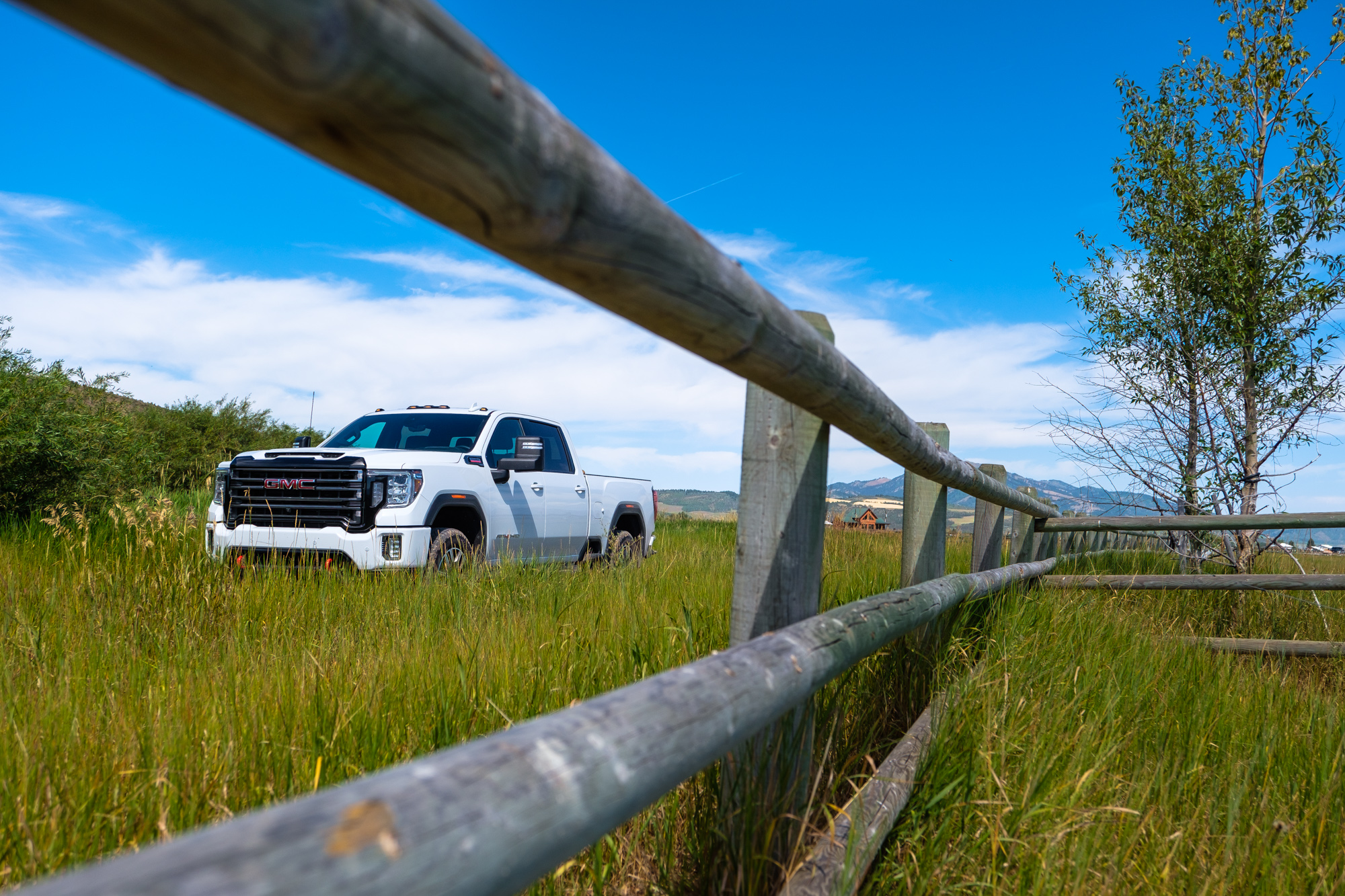It’s safe to say that manufacturers have caught onto the full-size, off-road trend. While RAM has owned the space with the Power Wagon for ages, Ford recently threw their hat into the ring with the Tremor, and now GMC has angled to do the same with their AT4 HD. After testing GMC’s light-duty Sierra AT4 last year, I had high hopes for this larger variant, especially when equipped with the Duramax diesel and an Allison transmission. But the short list of AT4 upgrades left me skeptical of whether or not it was up to the task of taking down its capable competitors. To find out for sure, we flew to Jackson Hole, Wyoming, to put it to the test.
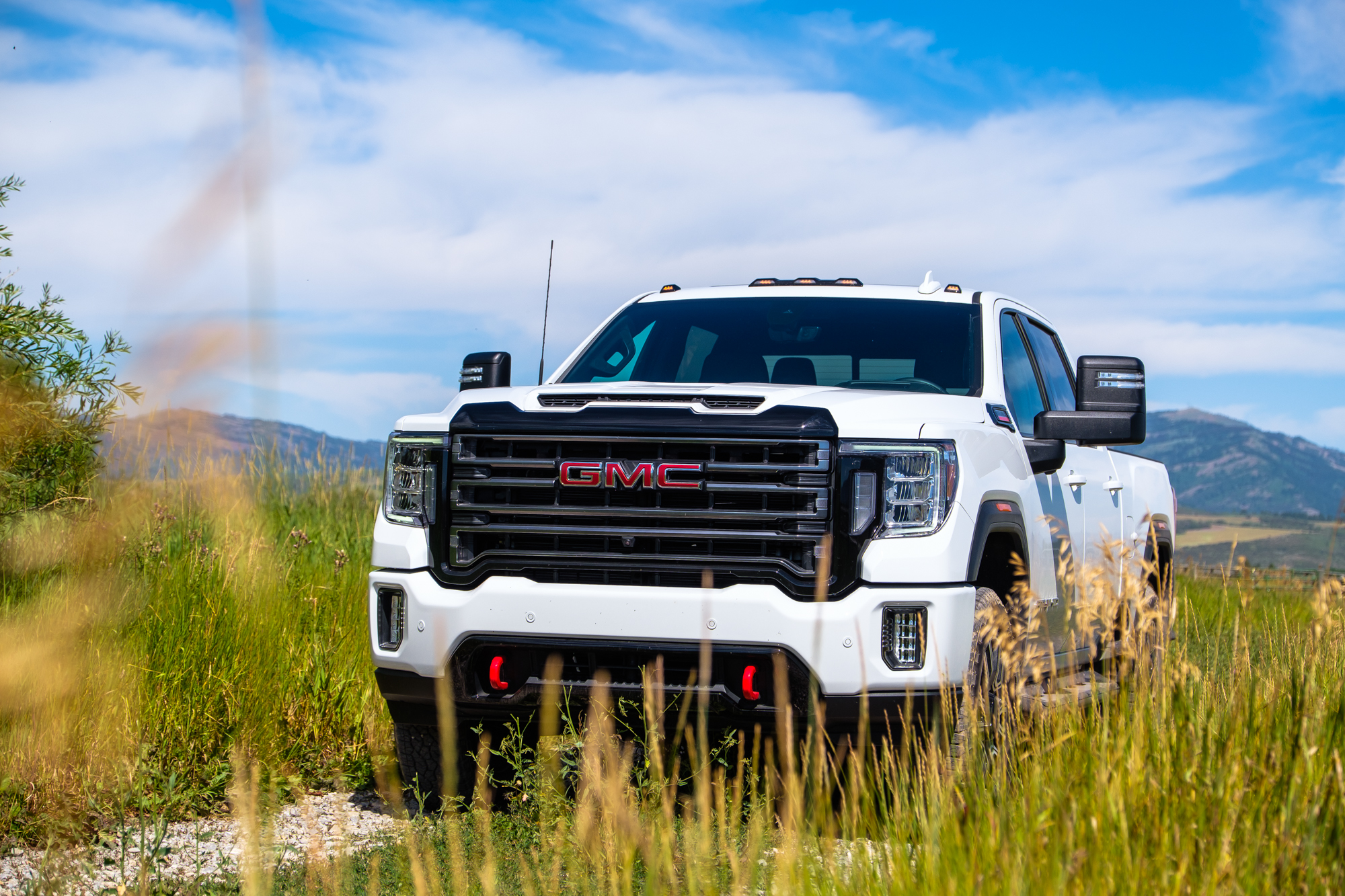
What You Need to Know About the AT4 Package
Before we dive into how this truck performs, let’s take a look at the bullet points you need to know about the AT4 trim level.
- Available on 2500 and 3500-level trucks
- Base price of $57,700
- Standard 6.6L gas V8 – 401 horsepower, 464 pound-feet of torque with 6-speed automatic transmission
- Optional 6.6L Duramax diesel – 445 horsepower, 910 pound-feet of torque with Allison 10-speed transmission
- X31 off-road suspension with Rancho shocks (no lift)
- Skid plates
- Eaton automatic locking rear differential
- 18-inch wheels wrapped in Michelin all-terrain tires
- Optional 20-inch wheels
- Traction select system with off-road specific terrain mode
- Hill descent control and hill start assist
- Available multicolor 15-inch diagonal head-up display with an off-road inclinometer
- 15 camera view system
- HD Surround Vision for low-speed views of vehicle surroundings
- Multi-Pro tailgate
- 10.1 inches of ground clearance
- Approach angle – awaiting official numbers
- Departure angle – awaiting official numbers
- Breakover angle – awaiting official numbers
In addition to these core changes, the AT4 also receives a number of different styling cues and visual elements. These include black and dark chrome finishes on the exterior, body-color bumpers, a unique grille design, and the red recovery hooks which stand out as an AT4 signature feature. Inside the truck, you’ll find darker aluminum finishes on the steering wheel, center stack, and sill plates, as well as jet-black seats with Kalahari accents. AT4 badges emblazon the headrests, and all-weather liners protect the floors. For 2020, it’s also worth noting that the DEF tank has been relocated inside the frame rail on all diesel HD trucks, which greatly reduces the chance of a puncture on the trail and improves clearance.
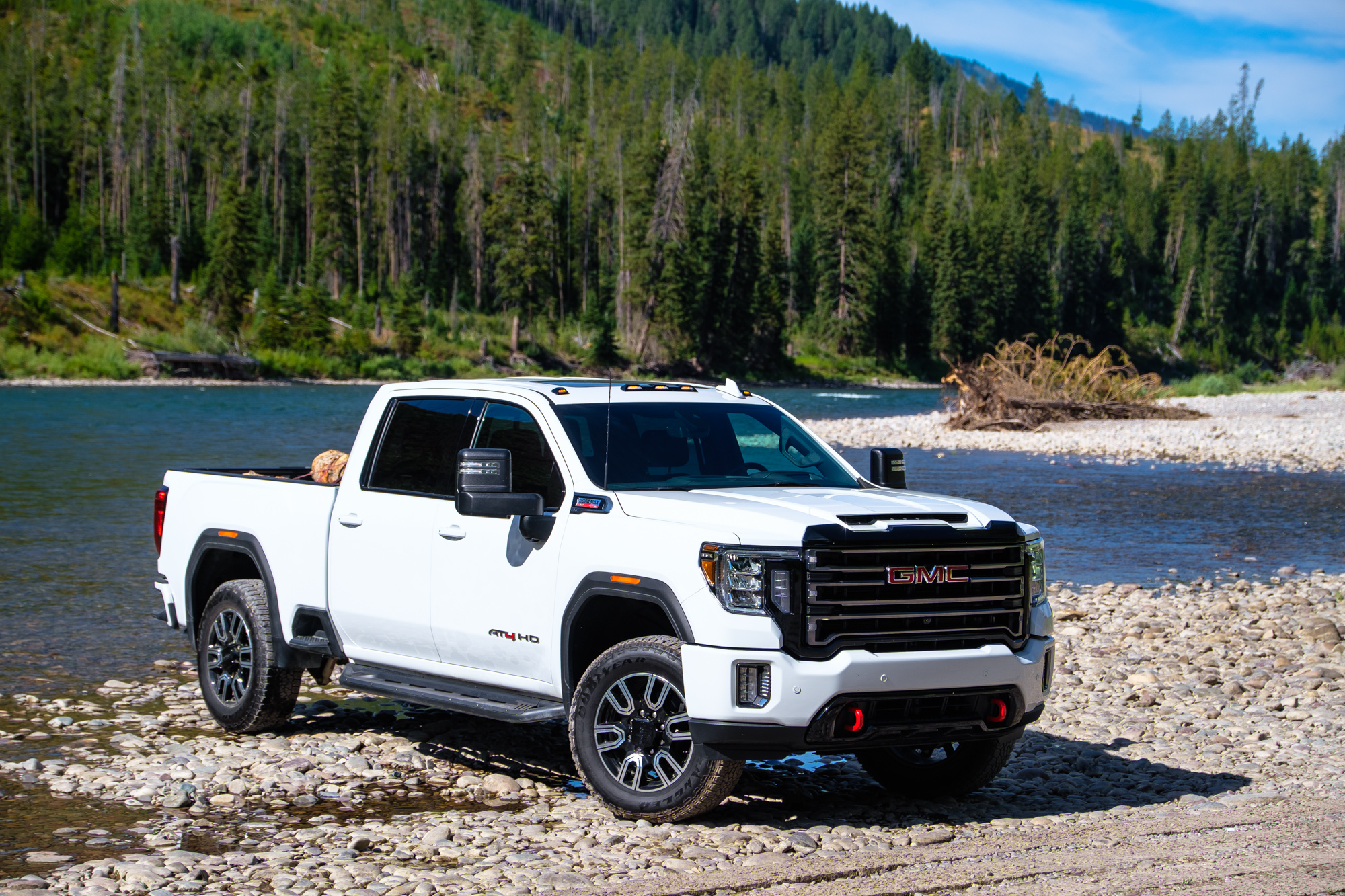
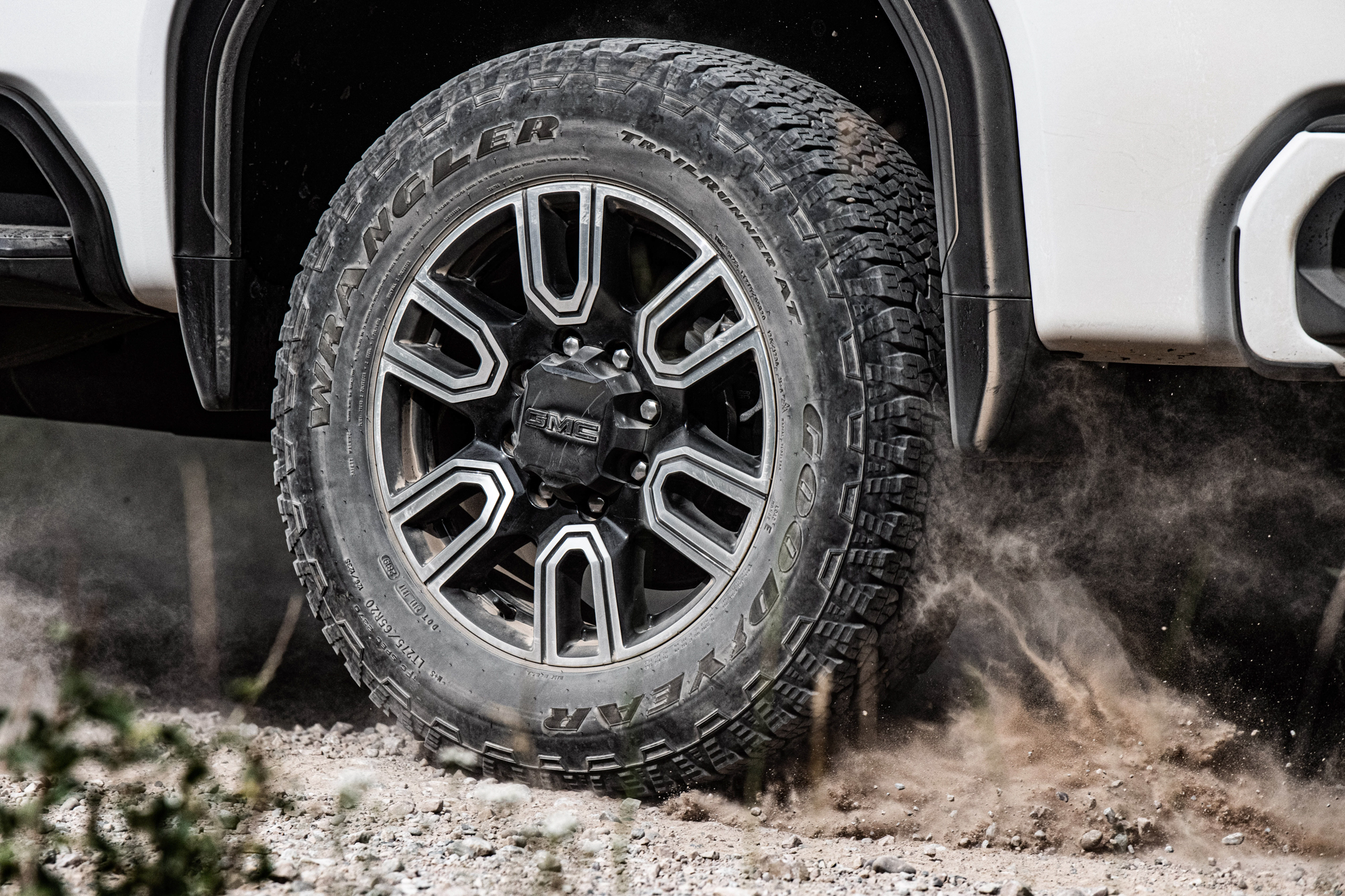
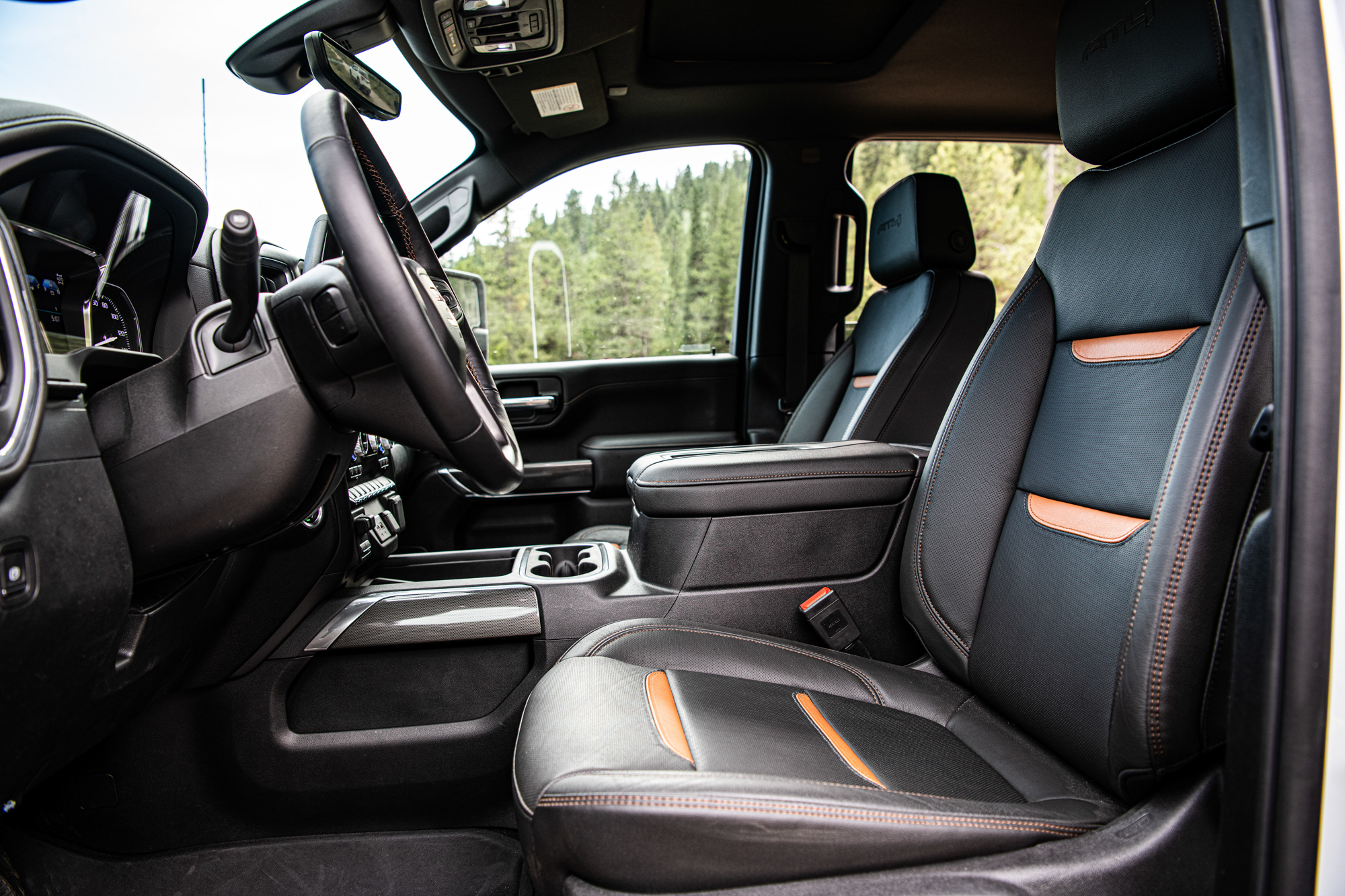
Performance
On the road, the AT4 HD performs pretty much as you’d expect for a GMC 2500. It’s big, comfortable, fairly quiet, and tows like an absolute dream. The 15 available camera angles are unreal for towing confidence, and a lifesaver when hauling a fifth-wheel through the confines of a town like Jackson Hole. It doesn’t feel fast off the line, but it pulls smoothly and consistently even when hauling a 12,000-pound trailer. The independent front suspension also gives the truck excellent road manners, predictable handling, and a ride that is surprisingly good for a 2500-level truck. It’s pretty much everything you’d expect from a modern diesel pickup aimed at a high-end market. But this is the off-road version, so you’re probably wondering how it handles on the trail right? Unfortunately, we don’t really know, and here’s why.
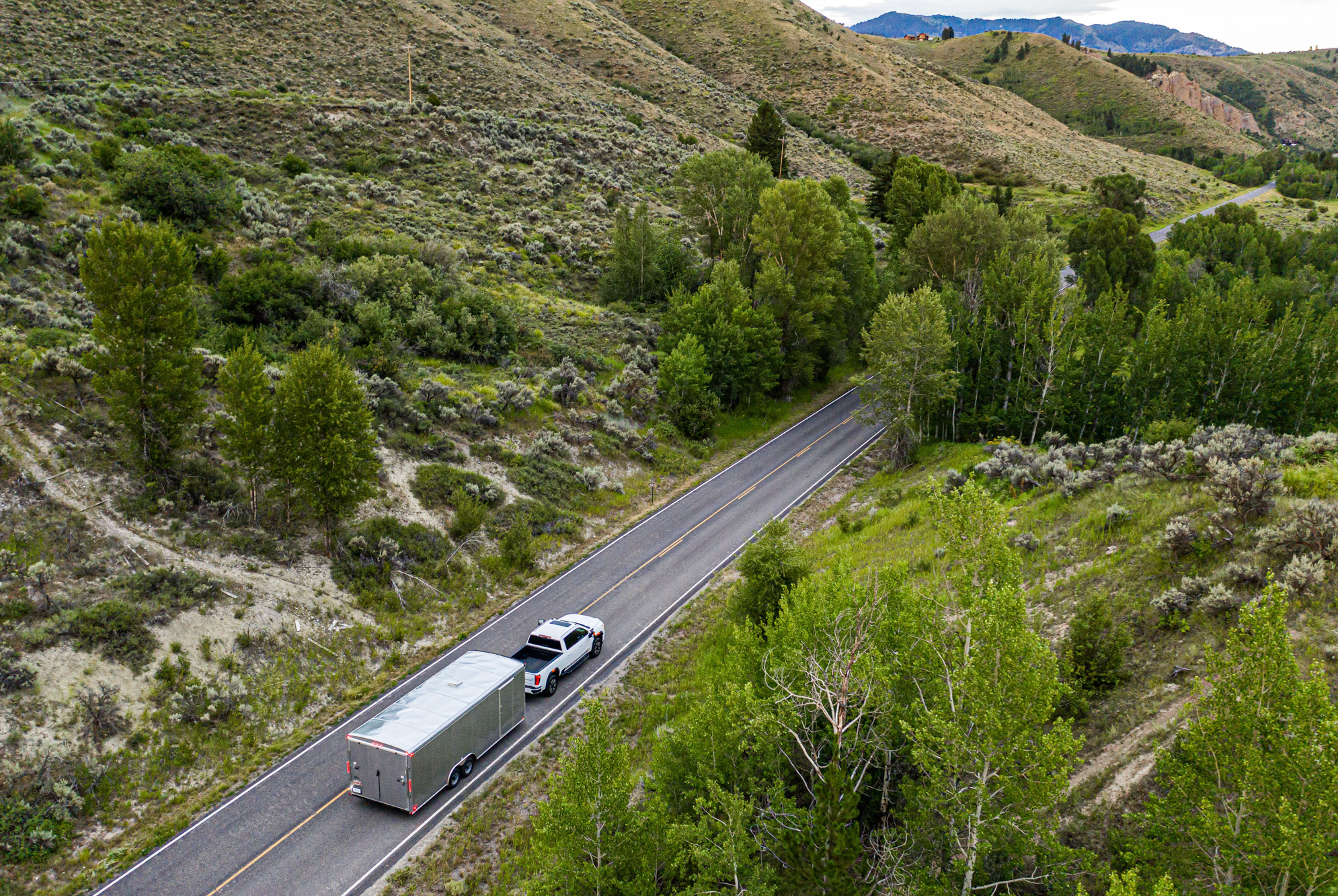
After the success GMC had drawing in a new and younger audience with the light-duty AT4, it was easy to recognize the market’s desire for more adventurous vehicles, and the HD line was a natural progression for the AT4 name. The only problem was, and remains, that existing HD customers are almost entirely focused on towing and payload, and therefore so is GMC, a fact that they made abundantly clear throughout this launch. The PR slide show, for example, was 25 pages long and included just one slide on 4×4 technology, which simply noted that the AT4 had an automatic setting for switching between two- and four-wheel drive high. Ironically, this is a reason to think about four-wheel drive less, not more.
The drive portion of our test echoed this uneven distribution, consisting nearly entirely of towing fifth-wheels, box trailers, and a 2,000-pound payload of wood over paved roads, followed by just 15 minutes or so on a dirt course. This “off-road” course wasn’t like the mud-strewn, boulder-covered beauty GMC constructed for their light-duty AT4 though. The HD course consisted of a dirt road that seemed more like a cart path on a golf course, and a bumpy two-track through a field that didn’t even give us a chance to put the truck in four-wheel drive. So while we’d love to say that the rear locker worked like a charm, that the new off-road bias suspension allowed the truck to articulate more easily through obstacles, or that the traction select system and hill descent control made the AT4 HD more effective in the rocks, we cannot really speak to any of it clearly. (We will work to get a test unit to put through our test course.)

Not that we expected the AT4 to outperform competitors like the Power Wagon on the trail anyway, because a simple glance at the spec sheet could tell you that. While it may have an off-road-tuned suspension, it doesn’t have any lift over stock height, which leaves its 10.1 inches of ground clearance falling short of the Power Wagon’s 14.3 inches. The GMC has a locking differential in the rear, but it’s an automatic locking diff, which is less effective in technical terrain than a driver-selectable locker, which the Power Wagon has in the front and the rear. The AT4 then seems to fall short of its competition in every category, except, it doesn’t.
That’s because the Power Wagon, despite being immensely capable, suffers from a payload ranging between 1,500 and 1,660 pounds depending on the trim, and a total towing capacity of just 9,790 pounds. The AT4, on the other hand, can tow up to 18,500 pounds or carry a payload of 3,862 pounds in the 2500 level, and tow up to 21,300 pounds or carry a ridiculous payload of 4,398 pounds at the 3500 level. For folks who need a truck for work as well as play, those numbers are going to make a big difference. So will the AT4’s available 6.6L turbo-diesel Duramax motor and 10-speed Allison transmission for that matter, which delivers 445 horsepower and 910 pound-feet of torque to the Power Wagon’s 410 horsepower, and 429 pound-feet of torque from its Hemi V8. And let’s not even dive into fuel economy while towing, because things will really tip in favor of the GMC. If you need an off-road truck that can tow and haul a payload, and a lot of people do, the choice between the two is clear: you’ll want the GMC.
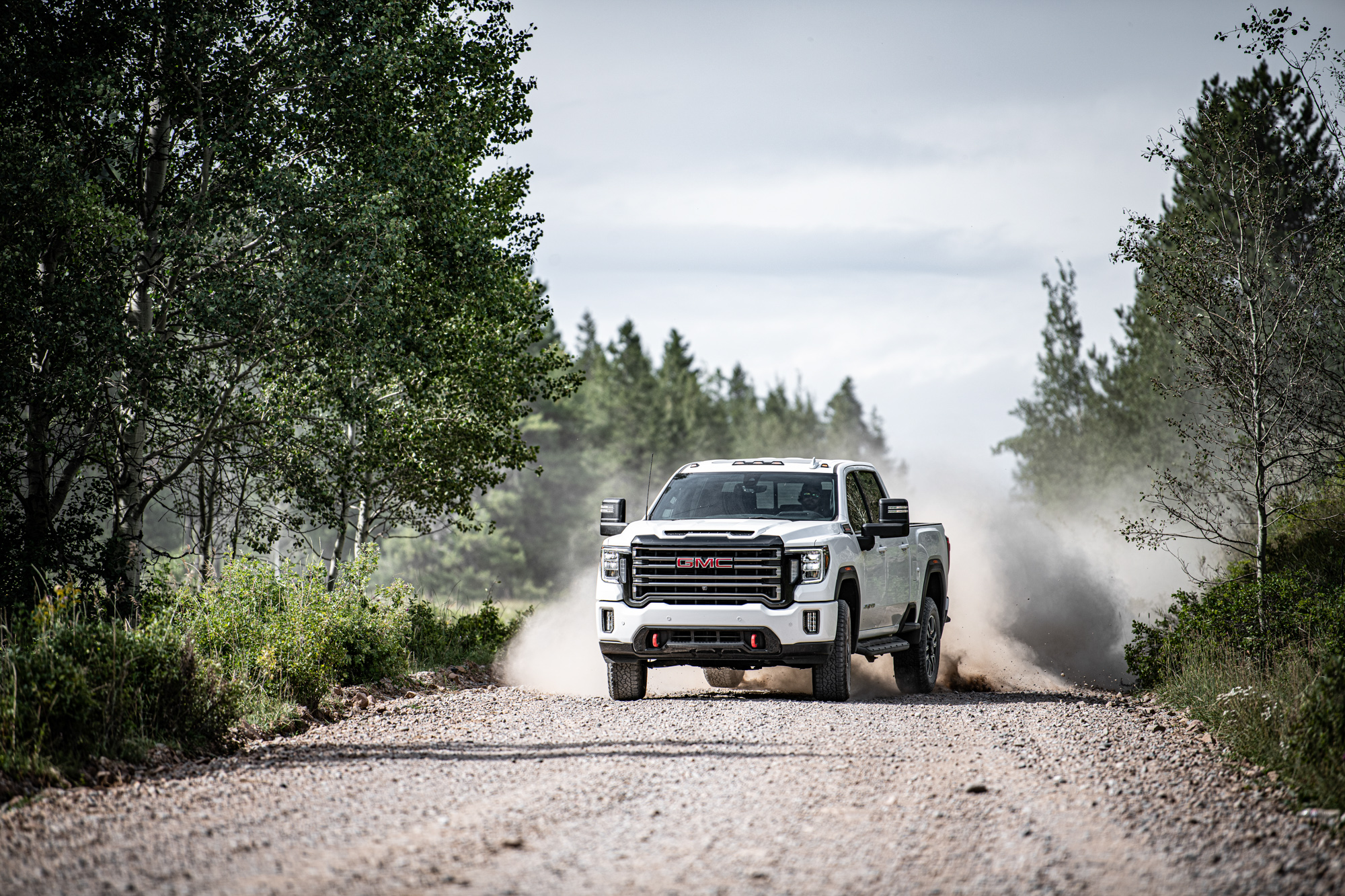
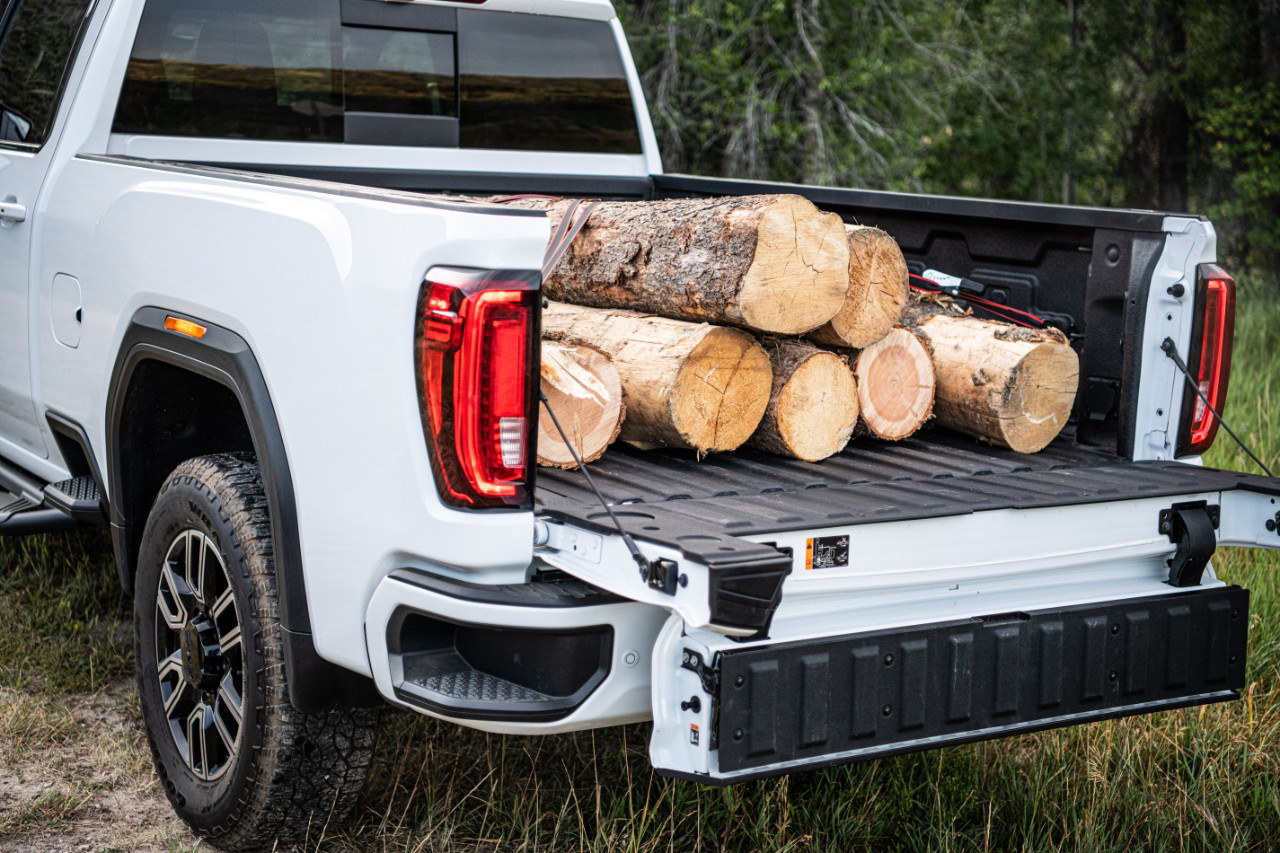

The only curveball to GMC’s plan is going to be Ford’s recently unveiled Tremor. While we don’t have any official numbers yet, it supposedly retains most of its payload and towing capacity, and comes equipped with either the all-new 7.3-liter gas V8 or the proven 6.7L turbo-diesel, which takes away the AT4’s diesel edge. It also comes with bigger and more aggressive tires than the AT4, an electronic locking differential in the rear, and a limited-slip in the front. Ground clearance for the Tremor comes in at 10.8 inches, which is just barely better than the AT4’s 10.1 inches. Without the approach, departure, and break-over angles of both vehicles though, it’s hard to say how they’ll stack up for sure. At the end of the day, the GMC AT4 HD is going to offer customers serious towing performance and payload capacity with aggressive looks and respectable trail capability.
To learn more about GMC’s new AT4 HD, visit their website here.
